CarEdge saved me over 4,500 dollars on a brand new Honda Pilot. I can't say thank you enough.
Price intelligence
Find a wide range of vehicle listings with market insights on new and used listings near you.


Help us personalize your CarEdge experience — it only takes a second.
Your answers help us personalize your CarEdge journey — we’ll follow up with tips and next steps that match your buying timeline.
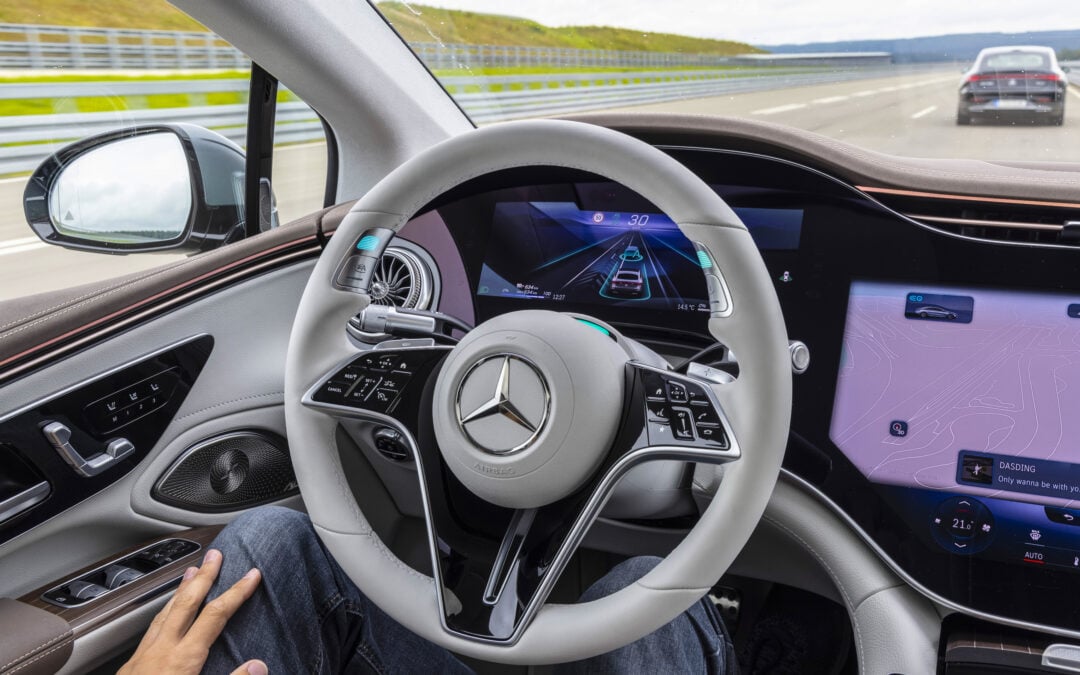
As we head into autumn, compelling luxury lease offers abound if you know where to look. We’ve sifted through the latest manufacturer offers to bring you the best 2024 and 2025 luxury lease deals available today. From Acura to Tesla, here’s your guide to some of the best luxury lease offers currently on the market.
Automakers release new lease deals early in the month, so check back for updates.

2024 Acura Integra Lease: Lease for $369 per month for 36 months with $4,999 due at signing.
2024 Acura RDX Lease: Lease for $429 per month for 24 months with $4,999 due at signing.
See all Acura lease deals at Acura.com

2024 BMW i4 Lease: Lease the eDrive35 for $449 per month for 36 months with $4,849 due.
2024 BMW X3 Lease: Lease sDrive30i for $579 per month for 36 months with $4,999 due.
2025 BMW X5 Lease: Lease the sDrive40i for $899 per month for 36 months with $6,599 due.
See all BMW lease offers at BMWUSA.com

2024 Cadillac Lyriq Lease: Lease for $349 per month for 36 months with $4,789 due.
2024 Cadillac XT5 Lease: Lease the FWD Luxury for $419 per month for 39 months with $4,459 due.
See all Cadillac lease offers at Cadillac.com

2024 Genesis G70 Lease: Lease from $399 per month for 36 months with $3,999 due at signing.
2024 Genesis G80 Lease: Lease from $559 per month for 36 months with $4,999 due at signing.
See all Genesis lease offers at Genesis.com

2024 Infiniti QX50 Lease: Lease the Pure AWD for $429 per month for 36 months with $5,574 due.
2024 Infiniti QX55 Lease: Lease the Luxe AWD for $489 per month for 36 months with $4,969 due.
See all Infiniti lease offers at InfinitiUSA.com

2024 Lexus RX 350 Lease: Lease for $539 per month for 36 months with $4,999 due.
2024 Lexus NX 350 Lease: Lease for $509 per month for 36 months with $3,999 due.
See all Lexus lease offers at Lexus.com

2024 GLE 350 4MATIC SUV: Lease for $849 per month for 36 months with $6,363 due.
2024 GLS 450 4MATIC SUV: Lease for $1,149 per month for 36 months with $8,443 due.
See all Mercedes-Benz lease offers at MBUSA.com
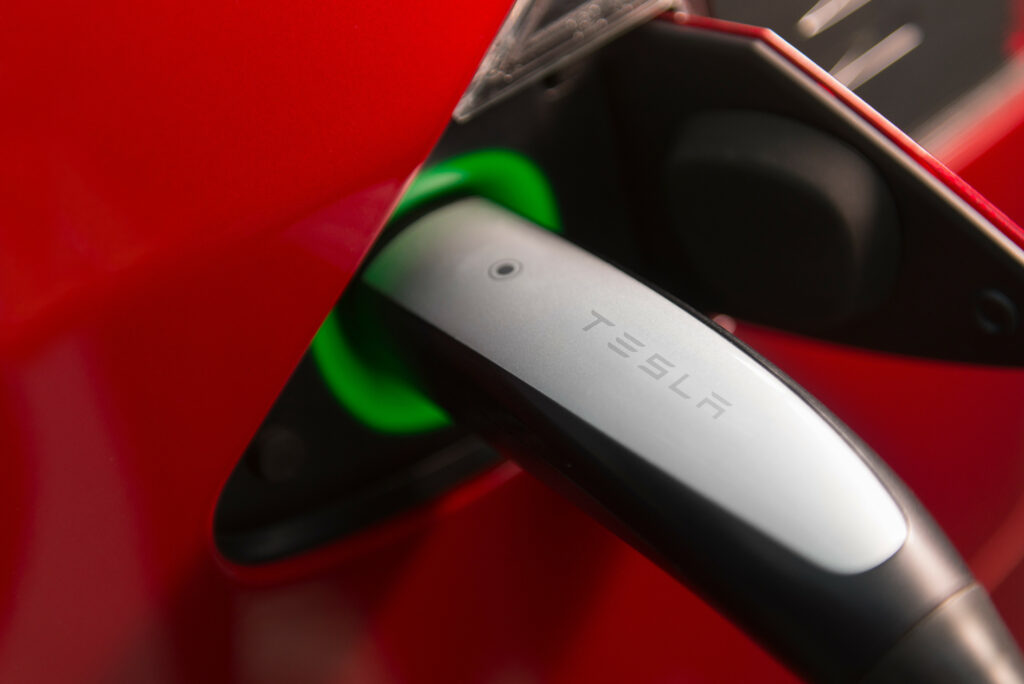
Model Y Long Range RWD: Lease for $339 per month for 36 months with $2,999 due.
Model 3 Long Range RWD: Lease for $309 per month for 36 months with $2,999 due.
Leasing a luxury car or SUV has never made more sense. When opting to buy instead, drivers are faced with interest rates at 20-year highs, and near-record car prices. With enticing luxury lease offers available, it makes sense to do what is essentially a long-term rental for the perfect car.

Ready to outsmart the dealerships? Download your 100% free car buying cheat sheets today. From negotiating a deal to leasing a car the smart way, it’s all available for instant download. Get your cheat sheets today!
Check out this other reader-favorite (100% free):

For those considering taking the plunge into the world of electric vehicles in 2025, there’s exciting news. The U.S. government has now clarified how car dealers can transfer tax credits for new and used EVs directly at the point of sale, ensuring you can benefit instantly from these incentives. But there’s a catch: dealers need to be registered. It’s an encouraging that more than 7,000 dealers have signed up, but thousands of others have yet to do the necessary work. Let’s delve into what this means for you.
Car dealerships across the country now have definitive guidelines on how tax credits for EVs can be handed over to the consumer at the point of sale. Previously, there were doubts about how swiftly dealers would be reimbursed by the federal government after passing the EV tax credit on to the buyer at the point of sale. The latest guidance is good news for EV buyers, but there’s a new item for your car buying checklist.
First, a quick reminder of how we got here.

In late 2022, the Inflation Reduction Act was passed into law here in the United States. The IRA brought back the federal EV tax credit for automakers like Tesla and General Motors, but took it away from Hyundai, Kia, Audi, and many others.
Why did the EV tax credit get taken away? The new rules are complex, but in summary, an electric vehicle must be made in North America, and fall under new price caps, in order to qualify. There are also battery sourcing requirements.
See exactly which EVs qualify, and the IRS income and eligibility guidance.
For all of 2023, the EV tax credit was just that, a non-refundable tax credit. Starting January 1, 2024, the EV tax credit became redeemable at the point of sale. In other words, you can take your federal incentive as a cash discount when you buy your car at the dealership.
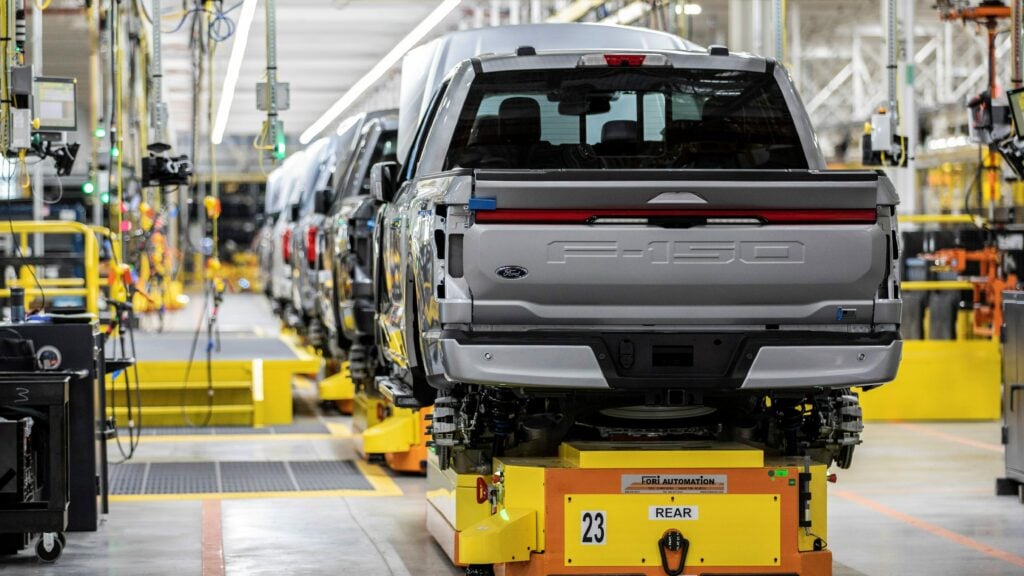
Previously, car dealers were nervous about how this EV incentive could play out. They remember the mess caused by poor planning during the Cash For Clunkers initiative years ago, and feared a repeat. That’s why dealers welcomed the news that the IRS will reimburse them within 72 hours.
For dealers, this is a game-changer. As Juan Alarcon, president of Car Pro Automotive Group, jubilantly told Automotive News, “Three days is great news.” But, he quickly adds a note of caution, “if they can pull it off.”
For these instant credits to materialize for buyers, dealers have a role to play. Your dealer must be registered on a new platform, IRS Energy Credits Online, in order for you to receive a point-of-sale EV tax credit.
This platform is the hub where dealers not only register but also electronically relay EV sales data to the IRS, receive payments for transferred credits, and file time-of-sale reports.
Once a credit is transferred at the point of sale, dealers have the option to slash the purchase price or hand cash over to the buyer. But remember, the amount has to be the full value of the available credit for the qualifying EV. Buyers will have to sign a statement under penalty of perjury that they understand the eligibility requirements for the EV tax credit, and will have to pay it back if they exceed the EV tax credit’s income limits for the year.
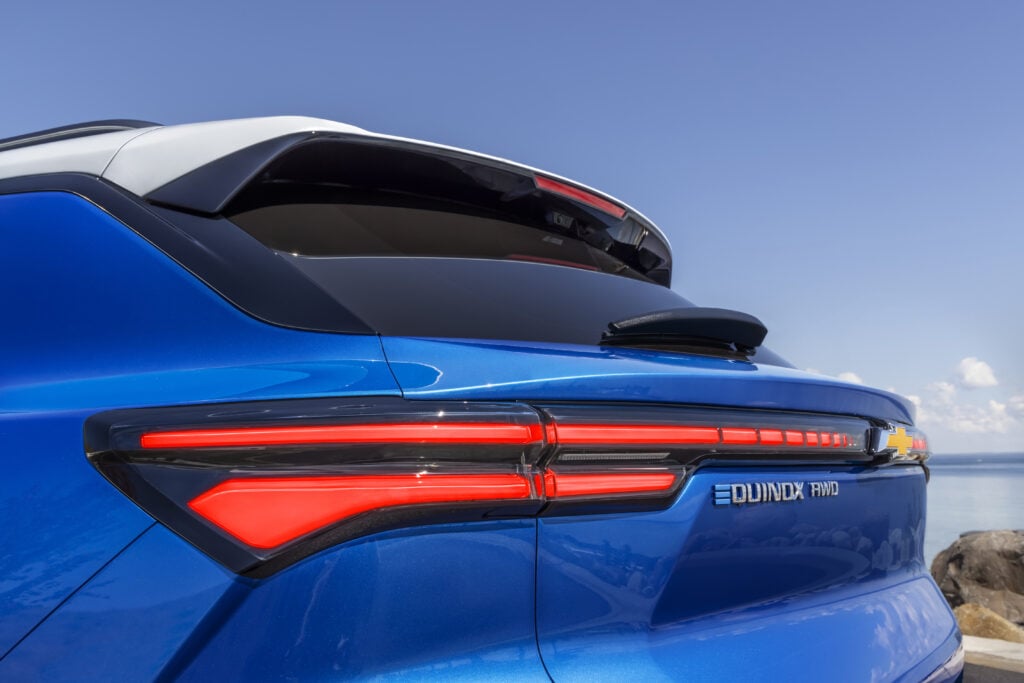
Finally, after a decade of asking for a point-of-sale tax credit, it’s finally here. However, if you’re buying from a car dealership, you need to check if they’ve registered with the new ‘IRS Credits Online’ system once it’s available.
If you sense any confusion or uncertainty, you can email them this article for further information. Remember, your car dealer must be registered before you can receive the EV tax credit at the point of sale.
Learn more about our car buying services. We’re simply here to help!

Purchasing a used car can be a smart financial decision, but it also comes with its own set of uncertainties and risks. Unlike new cars that come straight from the factory, a used vehicle has a history. To ensure you’re making an informed decision and getting the best value for your money, it’s essential to ask the seller some important questions. We’ve compiled a list of crucial questions you should ask when buying a used car. These questions will not only provide insights into the car’s history and condition but will also help you negotiate a fair price.
Our team of Car Coaches shared these critical questions for used car buyers. We especially want to thank Jerry from the CarEdge team for his insights!
We’ve listed the questions in order of importance. More important questions are listed first for each section. Of course, it’s best if you can get answers to all of these. No matter what, get a pre-purchase inspection!
It always pays to be an informed shopper. Here are some reader favorites that you can use to save more and stress less.
Used Car Price Trends (Updated Weekly)
Free Guides to Used Car Buying
Join the CarEdge Community to connect with likeminded bargain hunters. You can also see crowdsourced car deal reviews, and contribute your own!
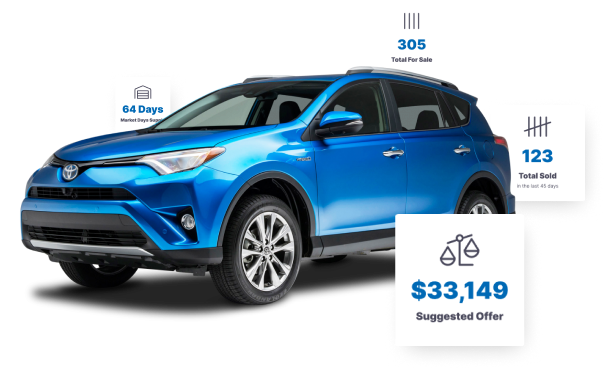
Purchasing a used car requires thorough research and due diligence. By asking these questions, you’re taking the right steps toward ensuring that your next vehicle is a reliable ride, and not a financial and mechanical burden.
Remember, transparency is key. If a seller hesitates or refuses to answer any of these questions, consider it a red flag.
Looking for help with buying a car? The CarEdge Team is ready to assist. From free resources to 1:1 car buying help, we’ve got you covered.
Check out these CarEdge success stories to see how much drivers are saving today.

The Chevrolet inventory landscape is undergoing a shift. Currently, there’s a varied supply of new Chevrolet vehicles across the U.S., but some models, like the Silverado 1500, Blazer, and Equinox, offer opportunities for negotiation and deals. But where does Chevrolet stand compared to its peers, and more critically, which Chevy models are most ripe for negotiation? As we steer through the current state of the market, we’ll take a look at where Chevrolet fits within the broader industry, and spotlight models that present the best opportunities for a deal.
Here’s how Chevrolet’s competition compares this month. It’s clear that new car inventory is rising across the board.
| Make | Inventory % Increase (3 Months) | Market Day Supply - December 2023 | Market Day Supply - September 2023 |
|---|---|---|---|
| Honda | +68% | 47 | 28 |
| Kia | +89% | 53 | 28 |
| Toyota | +37% | 41 | 30 |
| Hyundai | +50% | 75 | 50 |
| Chevrolet | +63% | 88 | 54 |
| Nissan | +58% | 112 | 71 |
| Volkswagen | +52% | 96 | 63 |
| Ford | +43% | 127 | 89 |
| Jeep | +31% | 191 | 146 |
Chevrolet is in the middle of the pack when it comes to inventory. Ford, Volkswagen, Nissan, and Stellantis’ Jeep have an oversupply.
American automakers have high inventory right now. Is that because they’re hot sellers? Not exactly. In recent years, Asian automakers like Toyota, Honda, Hyundai, Kia, and Mazda have all taken larger chunks of market share in the United States. These brands rely less on large SUVs and trucks, and more on crossover SUVs that prove popular.
How did the likes of Hyundai, Kia, and Mazda end up so competitive? In comparison to the imported cars of year’s past, today’s models offer improved reliability, better looks, and in most cases, improved reliability. These improvements from Chevy’s competition have given car buyers more reasons to cross shop.
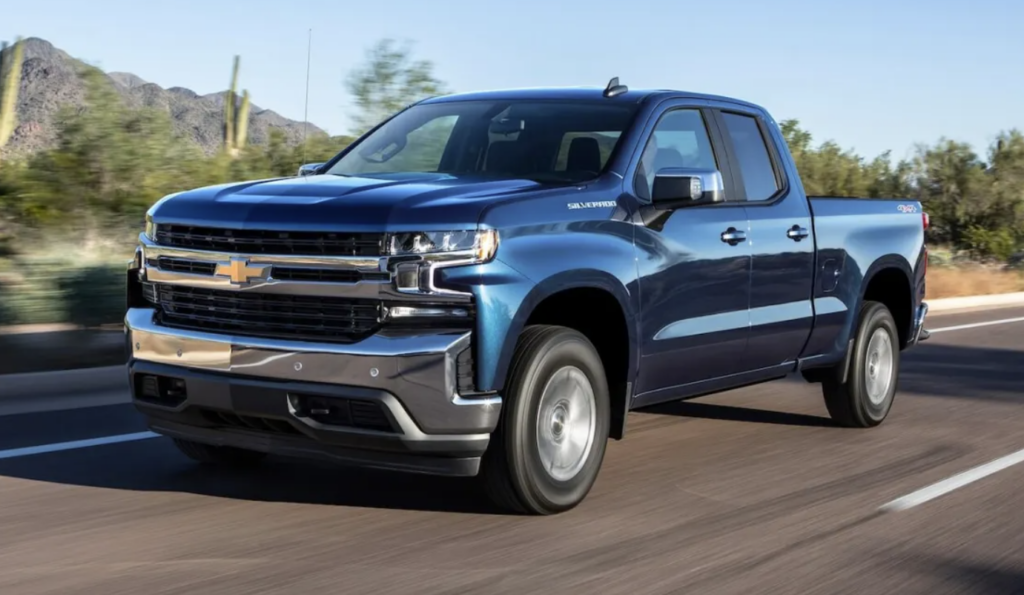
For buyers aiming to save money on a new Chevrolet, it’s smart to harness the power of car market data. Let’s take a look at today’s inventory numbers across the Chevrolet model lineup.
Using the tools available through CarEdge Data, we analyzed Chevrolet inventory for every model on sale in America. These numbers reflect nationwide supply. You can check out local Chevrolet inventory using CarEdge Data.
| Make | Model | Starting MSRP | Market Day Supply | Total For Sale | Negotiability |
|---|---|---|---|---|---|
| Chevrolet | Malibu | $25,000 | 47 | 4,615 | Average |
| Chevrolet | Bolt EV | $26,500 | 53 | 1,204 | Average |
| Chevrolet | Traverse | $34,520 | 54 | 14,893 | Average |
| Chevrolet | Bolt EUV | $27,800 | 55 | 4,218 | Average |
| Chevrolet | Camaro | $30,900 | 76 | 4,744 | Average |
| Chevrolet | Equinox | $26,600 | 85 | 37,708 | High |
| Chevrolet | Blazer | $35,100 | 97 | 12,984 | High |
| Chevrolet | Silverado 1500 | $36,300 | 107 | 77,118 | High |
The higher the inventory, the more negotiable a new car will be. Remember, these figures are for nationwide inventory. For local Chevrolet inventory numbers, try CarEdge Data.
The most negotiable Chevrolet models right now are the Silverado 1500, Blazer, and Equinox. With 107 days of supply, the Silverado 1500 is ripe for negotiating. Trucks across the market are slow-selling as buyers step away from expensive trucks during this extended period of high interest rates. Ram trucks have the highest inventory and most negotiability, with Ford faring slightly better.
For shoppers looking for a deal on an affordable SUV, the Chevrolet Equinox and Blazer are two great options for well under $40,000. In today’s market with average selling prices north of $48,000, that’s not a bad deal. Just be sure to avoid these dealer fees.
The Bolt EV and EUV have average inventory and negotiability. Surprisingly, these two electric models are in higher demand than most electric competitors, such as the Ford Mustang Mach-E and Hyundai IONIQ 5. It looks like the market for $50,000+ EVs has dried up, but there remains demand for more affordable electric vehicles.
Ready to negotiate a great deal on a Chevy? We can help you save thousands. From 1:1 help to free guides, we’ve got resources for every buyer. Our goal is to simplify car buying while saving you money.

New car models with less than 40 days of supply are generally less negotiable. There’s never any reason to justify paying dealer markups, but scoring a deal under MSRP is always tougher for these models.
These are the Chevrolet models with the lowest supply this month:
| Make | Model | Starting MSRP | Market Day Supply | Total For Sale | Negotiability |
|---|---|---|---|---|---|
| Chevrolet | Colorado | $29,200 | 22 | 4,442 | Low |
| Chevrolet | Corvette | $66,300 | 30 | 2,017 | Low |
| Chevrolet | Trax | $20,400 | 32 | 12,939 | Low |
| Chevrolet | Tahoe | $54,200 | 33 | 7,724 | Low |
| Chevrolet | Suburban | $57,200 | 36 | 3,107 | Low |
| Chevrolet | Trailblazer | $23,100 | 39 | 10,775 | Low |
Chevrolet’s most affordable truck, the Colorado, has the least supply right now. The Corvette, always a low-volume model, is typically on this list. The most notable model is the Chevrolet Trax. The Trax just received a major facelift, and is proving to be tremendously popular among budget car shoppers.
Why don’t automakers just make more affordable cars? Sadly, it’s all about profit margins. Manufacturers like General Motors make a lot more money per vehicle selling high-end trucks and SUVs than $30,000 models. To make matters worse, the car market volatility during and after the pandemic showed them that buyers will pay more for cars.
What can we do about it? For starters, never pay junk fees, forced add-ons, or additional dealer markups. Need assistance negotiating your car deal? Let us help!

While Chevrolet’s inventory varies across models, there’s a clear indication that deals are out there, especially for those who know where to look. Regardless of the popularity or scarcity of a particular model, buyers should never settle for unnecessary dealer markups, inflated add-ons, or costly warranties.
Should car buyers wait for 2024 to score a better deal? Don’t expect prices to drop substantially next year. If you’re thinking about waiting to buy, check out our 2024 car buying forecast.
Ready to master the art of negotiation? Equip yourself with the CarEdge advantage! With these invaluable resources, you can transform your car buying journey, gaining insights into market fluctuations, crafting a solid negotiation strategy, and clinching the best Chevrolet deal in town. Our mission is to guide you every step of the way.
Learn more about CarEdge Coach, CarEdge Data, and a member favorite, CarEdge Consults. We’re here to help!
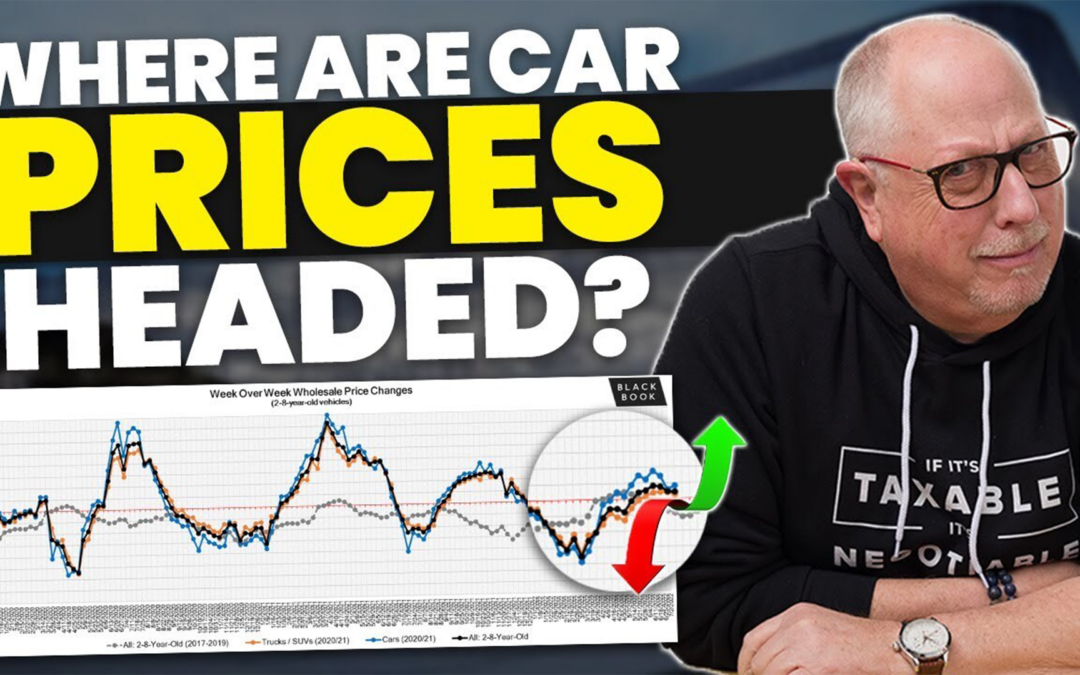
In 2025, the new car prices remain within a few percent of 2022’s all-time record highs. This stability comes after a year of slow but steady price drops, followed by a jump in prices in late 2024. As new car price trends prove tough to forecast, keeping an eye on the market’s subtle movements becomes crucial for potential buyers and sellers alike.
Let’s delve deeper into the current state of the new car market.
Which segments of new cars are experiencing price drops, and which are seeing a rise? Is now a good time to buy a new car, or is it a good time to sell? We will address these pressing questions and more.

According to the most recent data from Cox Automotive, the average transaction price for new cars is $48,699. That’s down slightly from the peak of $49,929 in December 2022. New car prices increased in April 2025, but were 1.3% higher than one year prior. The month-over-month price increase of 2.5% was sharp was the largest since April of 2020. Prices had previously fallen as low as $47,244 earlier in 2024, before bouncing back. Here’s a look at new car prices over the past year.
| Month-Year | Average New Car Transaction Price |
|---|---|
| 1/1/2024 | $47,401 |
| 2/1/2024 | $47,244 |
| 3/1/2024 | $47,218 |
| 4/1/2024 | $48,368 |
| 5/1/2024 | $48,389 |
| 6/1/2024 | $48,424 |
| 7/1/2024 | $48,166 |
| 8/1/2024 | $47,870 |
| 9/1/2024 | $48,397 |
| 10/1/2024 | $48,623 |
| 11/1/2024 | $48,724 |
| 12/1/2024 | $49,740 |
| 1/1/2025 | $48,641 |
| 2/2025 | $47,577 |
| 3/2025 | $47,462 |
| 4/2025 | $48,699 |
Some new car segments saw notable price declines last month, while others are holding firm. New car incentives have fallen sharply since year-end sales concluded. The luxury vehicle segment has experienced notable price reductions, with Tesla, BMW, Audi, Cadillac, and Lexus seeing lower prices last month. Tesla is now a top-10 luxury brand in America, not just the leader of electric vehicle sales. We’ll see how the first month of 2025 turns out for new car price trends.
If you’re looking for the BEST deal on a new or used car, remember this: knowledge is power when it comes to negotiating car prices. When you have an understanding of local inventory dynamics, car price trends, incentives, and the negotiable aspects of a car deal, you’re better prepared to drive away proud of your deal.
Free Car Buying Help Is Here!

Ready to outsmart the dealerships? Download your 100% free car buying cheat sheets today. From negotiating a deal to leasing a car the smart way, it’s all available for instant download. Get your cheat sheets today!